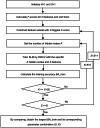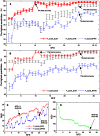A novel approach for lie detection based on F-score and extreme learning machine
- PMID: 23755136
- PMCID: PMC3670874
- DOI: 10.1371/journal.pone.0064704
A novel approach for lie detection based on F-score and extreme learning machine
Abstract
A new machine learning method referred to as F-score_ELM was proposed to classify the lying and truth-telling using the electroencephalogram (EEG) signals from 28 guilty and innocent subjects. Thirty-one features were extracted from the probe responses from these subjects. Then, a recently-developed classifier called extreme learning machine (ELM) was combined with F-score, a simple but effective feature selection method, to jointly optimize the number of the hidden nodes of ELM and the feature subset by a grid-searching training procedure. The method was compared to two classification models combining principal component analysis with back-propagation network and support vector machine classifiers. We thoroughly assessed the performance of these classification models including the training and testing time, sensitivity and specificity from the training and testing sets, as well as network size. The experimental results showed that the number of the hidden nodes can be effectively optimized by the proposed method. Also, F-score_ELM obtained the best classification accuracy and required the shortest training and testing time.
Conflict of interest statement
Figures





 vs log (NHN). 5B: Highest specificity
vs log (NHN). 5B: Highest specificity  vs log (NHN).
vs log (NHN).References
-
- Phan KL, Magalhaes A, Ziemlewicz TJ, Fitzgerald DA, Green C, et al. (2005) Neural correlates of telling lies: a functional magnetic resonance imaging study at 4Tesla. Acad Radiol 12(2): 164–172. - PubMed
-
- Rosenfeld JP (2002) Event-related potentials in the detection of deception. Handbook of Polygraph Testing. Academic Press, New York. 265–286.
-
- Davatzikos C, Ruparel K, Fan Y, Shen DG, Acharyya M, et al. (2005) Classifying spatial patterns of brain activity with machine learning methods: Application to lie detection. NeuroImage 28(3): 663–668. - PubMed
-
- Polich J, Herbst KL (2000) P300 as a clinical assay: rational, evaluation, and findings. Int J Psychophysi 38(1): 3–19. - PubMed
Publication types
MeSH terms
LinkOut - more resources
Full Text Sources
Other Literature Sources

